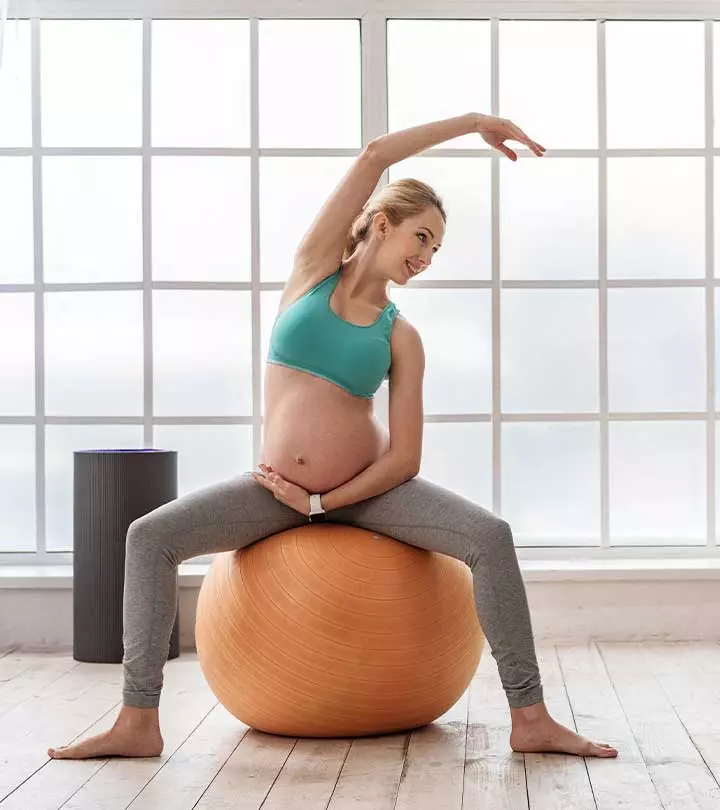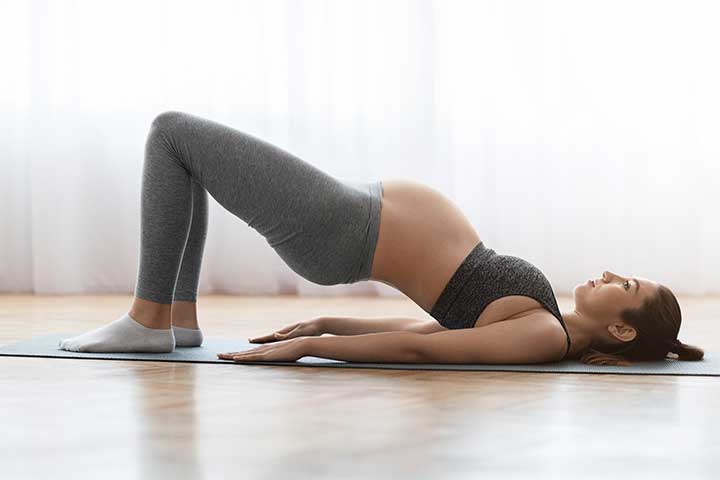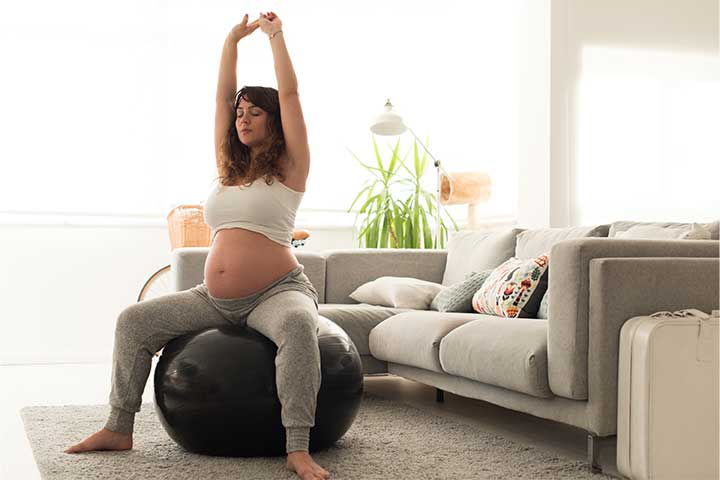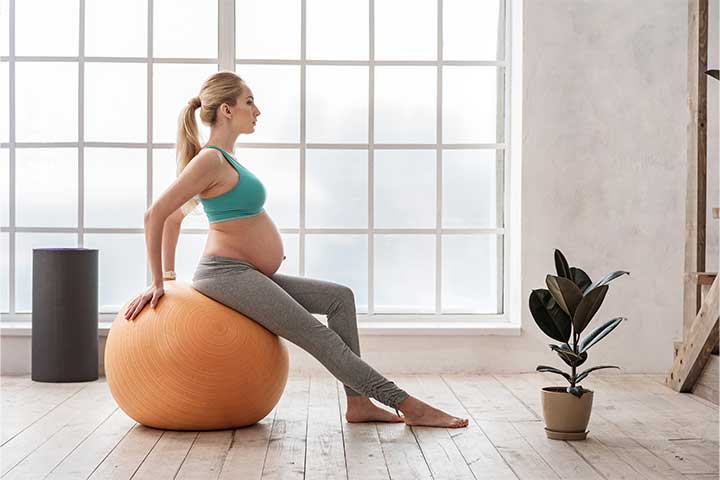
Image: Shutterstock
Pregnancy is a transformative journey that brings about numerous physical and emotional changes. It’s a time when taking care of your body and mind is of utmost importance. Both yoga and Pilates offer gentle and effective ways to support your well-being during pregnancy. In this article, we’ll explore the benefits of practicing yoga and Pilates during pregnancy, provide valuable tips, and address important considerations to ensure a safe and healthy experience. Read on to know more!
What Are The Benefits Of Doing Yoga And Pilates During Pregnancy?
Image: Shutterstock
Pregnancy can take a toll on your body, but regular practice of yoga and Pilates can offer a range of benefits:
1. Enhanced Strength and Flexibility
Yoga and Pilates are excellent for maintaining and improving muscle strength and flexibility. Increased strength can help support your growing belly and alleviate common pregnancy discomforts.
2. Stress Reduction And Relaxation
Both practices emphasize mindfulness, deep breathing, and relaxation techniques that reduce stress and anxiety. These practices can help you connect with your body and create a sense of calm and balance during pregnancy.
3. Improved Posture
Pregnancy often leads to changes in posture as your body adapts to the added weight. Yoga and Pilates may help to maintain good posture, which can alleviate back pain and discomfort.
4. Pain Relief
Gentle stretches and exercises can relieve common pregnancy-related discomforts such as lower back pain, hip pain, and leg cramps.
5. Preparation For Labor
Many yoga and Pilates poses and exercises focus on strengthening the pelvic floor and increasing awareness of the birthing process. This preparation can potentially make labor and delivery smoother.
6. Bonding With The Baby
Practicing yoga and Pilates allows you to take time each day to connect with your growing baby. These mindful movements can create a deeper sense of bonding between you and your baby.
Tips For Doing Yoga Or Pilates During Pregnancy
Image: Shutterstock
1. Consult Your Healthcare Provider
Before beginning any exercise routine during pregnancy, consult your healthcare provider to ensure it’s safe for you and your baby. Discuss any specific concerns or conditions you may have that could affect your practice.
2. Choose A Prenatal-Certified Instructor
Opt for instructors who are certified in prenatal yoga or Pilates. They will have the expertise to tailor exercises to your specific needs and trimester.
3. Start Slowly
If you’re new to yoga or Pilates, start with beginner-level classes or routines. Gradually increase the intensity and duration of your practice as your pregnancy progresses.
4. Listen To Your Body
Pay close attention to how your body feels during each session. If something doesn’t feel right or causes discomfort, modify or skip that pose or exercise.
5. Stay Hydrated
Hydration is essential during pregnancy, especially when engaging in physical activity. Drink plenty of water before, during, and after your practice to prevent dehydration.
6. Use Props
Yoga props like blocks, bolsters, and straps can provide support and help you maintain proper alignment. Pilates may also incorporate props like stability balls and resistance bands for added support.
What Should I Be Careful Of?
Image: Shutterstock
1. Avoid Overstretching
Pregnancy hormones can make your joints more flexible, which may increase the risk of overstretching or injury (1). Be mindful of your range of motion, and avoid pushing yourself too hard.
2. Skip Supine Positions
After the first trimester, it’s generally advisable to avoid lying flat on your back for extended periods during both yoga and Pilates. This position can potentially reduce blood flow to your baby.
3. Be Cautious With Balance Poses
As your pregnancy progresses and your center of gravity changes, be cautious with balanced poses in yoga. Use props or a wall for support to avoid falls or injuries.
What Kind Of Exercises Can I Expect At A Pregnancy Yoga Or Pilates Class?
Image: Shutterstock
1. Pregnancy Yoga
I. Gentle Stretches
Yoga classes often include gentle stretches to relieve tension in the back, hips, and legs.
II. Breathing Exercises
Pranayama, or breath control, is a central aspect of yoga. You’ll learn techniques to enhance relaxation and cope with discomfort during pregnancy.
III. Pelvic Floor Exercises
These help prepare the pelvic floor muscles for labor and recovery.
IV. Meditation And Mindfulness
Many prenatal yoga classes incorporate meditation and mindfulness practices to reduce stress and anxiety.
2. Prenatal Pilates
I. Core Strengthening
Pilates focuses on strengthening the core muscles, which can help support your growing belly and maintain good posture.
II. Pelvic Floor Exercise
Like in yoga, Pilates emphasizes the pelvic floor muscles to prepare for labor.
III. Modified Exercises
Instructors will provide exercises that are safe and appropriate for each trimester, often avoiding supine positions and high-impact movements.
IV. Breathing Techniques
Pilates incorporates controlled breathing to enhance concentration and support muscle engagement.
Practicing yoga and Pilates during pregnancy can be a wonderful way to support your physical and emotional well-being. The key is to choose classes or routines specifically designed for expectant mothers and to exercise caution. Listen to your body and consult your healthcare provider throughout your pregnancy journey. With the right guidance and mindfulness, you can experience the numerous benefits of these practices, helping you stay healthy, relaxed, and prepared for the beautiful journey of motherhood.
















